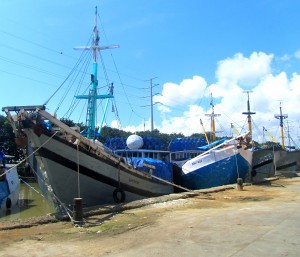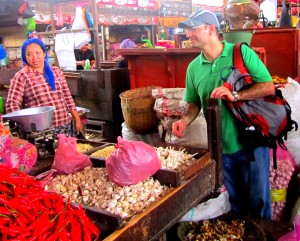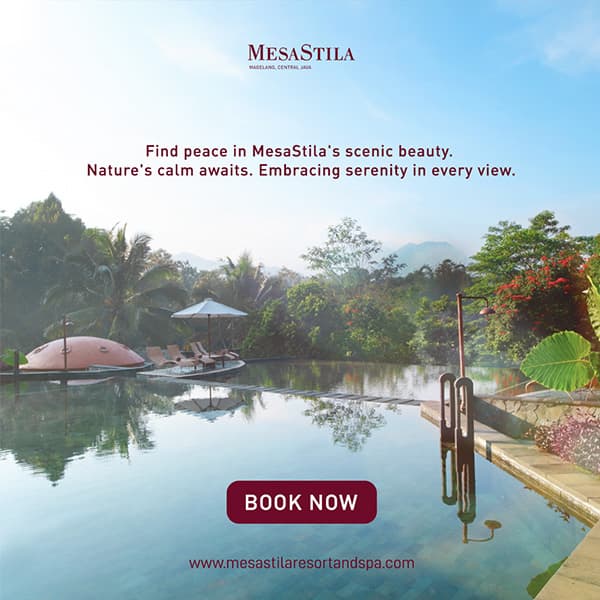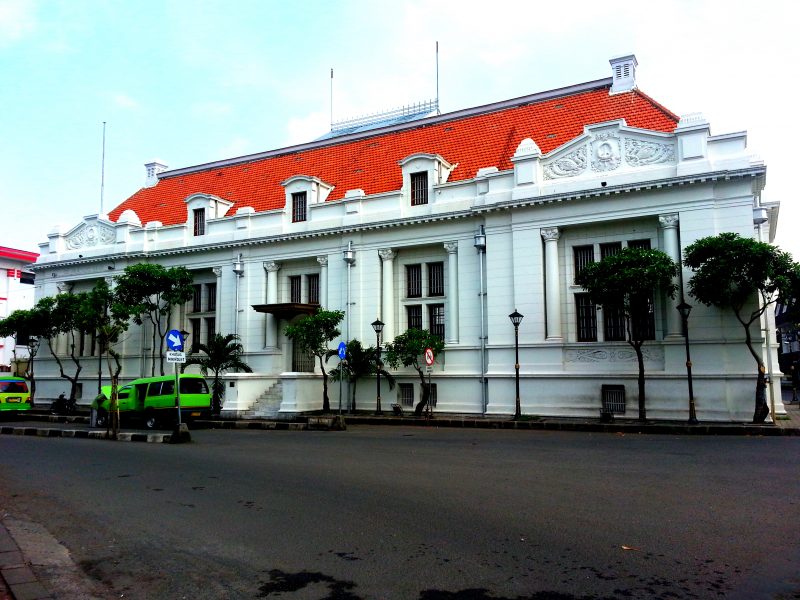Look in a travel guide and the description of Surabaya won’t exactly allure you. For many years Lonely Planet described the city as one of open sewers and industrial grime. These days the city has cast off its workmanlike demeanour and become considerably more glitzy. It’s still a city that defines its purpose as mercantile and commercial, but with a burgeoning middle class it has developed a great deal since it was just a big country town. Still second to Jakarta, but with its own culture, it can stand alone.
For the visitor with an interest beyond the glitzy mall culture, night joints and trendy startup restaurants, there are rewards. Surabaya dates its foundation back to the early 13th century, and we see it clearly on early Portuguese maps. It came to prominence in the 18th century with the spice trade. Stretched out to its east are the Moluccas which were being fought over by the Portuguese, British and Dutch for their yield of nutmeg, mace and cloves, so dear to the Europeans as flavouring and preserving agents. By the mid-19th century the Dutch administration had opened up the colony to investment from home and to immigration from those seeking opportunities in its plantations, cities and towns. Surabaya for much of this time was a far wealthier city than the administrative city of Batavia, modern day Jakarta, because of its commercial activity and level of investment. Old Surabaya of today dates from this growth spurt which lasted right up to the Japanese occupation of 1942.
Any exploration of the city should begin at the wharf where the phinisi teak wood schooners are moored. Crafted by the Bugis people of southern Sulawesi, these fine boats have been sailing these waters for centuries. Arriving from the outer islands north and east of Surabaya with produce – coconut husks for oil production, bananas, woods, and returning with manufactured articles not available there -plastic goods, furniture, drums of cooking oil, gallons of drinking water and construction supplies, this is not just a tourist sight, although it is that, too, but a thriving scene that would have been identical a century or more ago.
We walk from the port through narrow bustling streets that were once part of the central business district, but are now more the underbelly of the local economy of small entrepreneurs, merchants and traders. Much of the architecture here is 19th century, and bathes in a quaint faded light, with few keeping the old facades in good repair. Some fine buildings stand out, including the De Javasche Bank, the father of modern day Bank of Indonesia, incorporating European and oriental embellishments, which became known as the “Indies” style of architecture. The House of Sampoerna is not far from here, the first of the Sampoerna clove cigarette factories and nowadays an excellent museum to the entrepreneurial spirit of the Chinese immigrant family of Liem Seeng Tee, who started as stall keepers and rose to become one of Indonesia’s richest families. Surabaya owes much to the Chinese who dominate the economy here. So many arrived as economic refugees and made Surabaya their home, thus contributing to the prosperity of Surabaya today.
Strolling further south we come to Jembatan Merah, the Red Bridge, where in October 1942 British Brigadier-General Mallaby, who was tasked with accepting the Japanese surrender and the return to Dutch rule, was murdered by nationalist youths euphoric over the Japanese capitulation and determined that they would never again be under the yoke of foreign troops, unleashing a series of events that were pivotal in the independence struggle that finally resulted in independence in 1949. This area is the centre of the old city that flourished on the income gained from plantation crops – tobacco, coffee, cacao, rubber, sugar and salt – that fed the local economy and benefited the Netherlands back home. Beautiful edifices line Jalan Jembatan Merah. The original headquarters of the Goodyear rubber company, prudential insurance companies, banks and import/export agencies. The finest example of the Indies style can be seen in the grand PTPNXI building, once the Indonesian headquarters of the Handelsvereeniging Amsterdam company and designed by Hulswit, Fermont & Cuypers, a Jakarta-based architectural firm responsible for so many of the city’s fine buildings.
We are on the edge of the Chinese Quarter here and as we walk towards Surabaya’s oldest Chinese temple (klenteng), we pass by many examples of Chinese houses with their distinctive roofs with their pointed eaves. A Rumah Abu, a shrine house, owned by one of Surabaya’s most prominent Chinese families sits rather forlornly on what was once Chinese Street. Hok An Kiong was built in the 1850s by a Chinese sailor from China who had it dedicated to the sea goddess, Muzo. Built by a craftsman from China there is also a graceful statue of Goddess Thian Siang Sing Boo in one of the four shrine rooms.
Maybe a million people live in old Surabaya, and Pasar Pabean, the city’s oldest existing food market and the central food resource, is one of the most colourful stops on our exploration. Madurese vendors of shallots, garlic, chillies, lemongrass and spices make this a fantastic photographic opportunity. At the far end, a fish market showcases more than 30 species that will end up on the menus of Surabaya’s many seafood restaurants. After the hectic squeeze it is a relief to get out into the daylight and walk our way onto the Arab Quarter. Arab traders mostly from Yemen settled here over centuries, and who knows why they chose to stay rather than return on their boats, but they have formed a community that is robust in its more orthodox interpretation of Islam. Here Sunan Ampel, one of nine Muslim preachers credited with the spread and establishment of Islam in Java after a millennium of Hindu-Buddhism, taught and is buried. This is a pilgrimage point for many who in their lifetime hope to visit the resting places of the revered nine.
The covered souk in the Arab Quarter will remind anyone who has visited North Africa or the Middle East of the traditional markets there. Foods traditionally associated with Arab cuisine – dates, pistachios, raisins, chickpeas, halawa, sambosas – are sold here. This is a warm and friendly area to western visitors. Often a hand is extended and a welcome made.
A ten-minute drive takes us to the administrative centre of the city – the strikingly modern building for its time, the East Java governor’s office, and opposite, the Heroes Museum, which sits on the razed site of the Palace of Justice, which was ransacked and destroyed on news of the Japanese capitulation. Used as the headquarters of the dreaded Japanese secret police, the kempetai, it was the scene of one of Surabaya’s many battles that began in 1945. Now it houses a museum to the independence struggle and the Tugu Pahlawan, a striking obelisk to the fallen, and a fitting conclusion to our exploration of Surabaya’s colourful past.
Province: East Java
How to get there: Flights to Surabaya are available on all of Indonesia’s airlines and there are regular flights from Singapore, Kuala Lumpur and Hong Kong. Trains connect to the major cities.
Where to stay: Hotel Majapahit, Jl. Tunjungan. http://www.hotel-majapahit.com/ The most iconic hotel full of history and charm.




